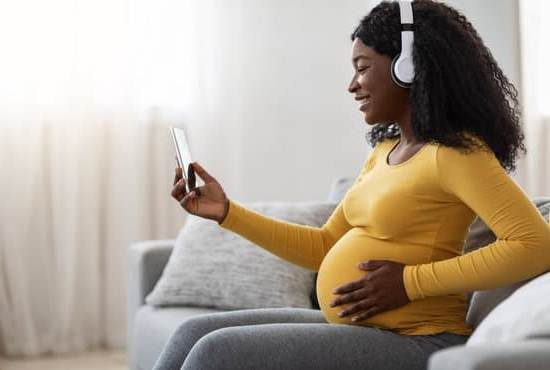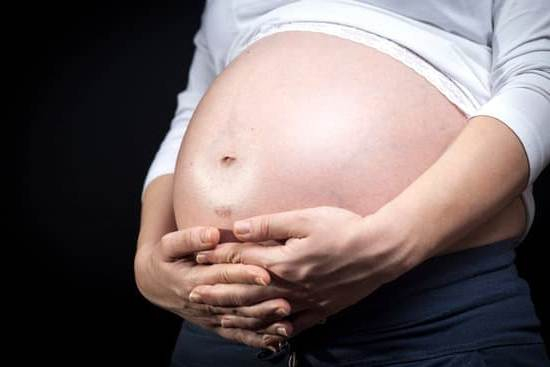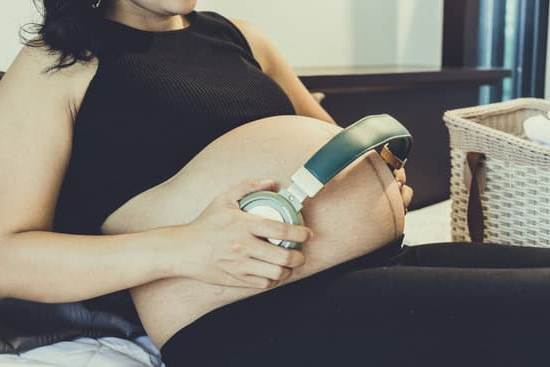Ovarian Pain During Pregnancy
Many women experience ovarian pain during pregnancy. This pain can be caused by a number of different things, including the expanding uterus, hormonal changes, and constipation. In most cases, ovarian pain during pregnancy is not a cause for concern and will go away on its own.
The most common type of ovarian pain during pregnancy is called round ligament pain. This pain is caused by the ligaments that support the uterus stretching as the uterus grows. The pain can be sharp and stabbing, and is usually located in the lower abdomen. Round ligament pain usually goes away within a few weeks after delivery.
Another common type of ovarian pain during pregnancy is called implantation pain. This pain is caused by the embryo attaching to the wall of the uterus. Implantation pain is usually mild and occurs around the time of implantation, which is about six to twelve days after conception.
Other causes of ovarian pain during pregnancy include constipation, gas, and urinary tract infections. Hormonal changes can also cause ovarian pain. For example, the increase in progesterone levels during pregnancy can sometimes cause pain in the lower abdomen.
If you are experiencing ovarian pain during pregnancy, be sure to talk to your doctor. Your doctor will be able to determine the cause of the pain and provide you with the appropriate treatment.
Is Lower Abdominal Pain A Sign Of Pregnancy
?
The short answer is: it could be.
While there are many potential causes of lower abdominal pain – from gas and bloating to more serious issues like appendicitis – one common culprit is pregnancy. So if you’re experiencing lower abdominal pain, especially if it’s accompanied by other symptoms like nausea, vomiting, or spotting, it’s worth checking in with your doctor to see if you might be pregnant.
There are a few things to keep in mind when it comes to lower abdominal pain and pregnancy. For one, not all women experience pain in the lower abdomen during early pregnancy; some may experience pain in their upper abdomen, while others may not experience any pain at all. Additionally, the kind of pain you’re experiencing can vary from woman to woman. Some women describe it as a dull ache, while others experience sharper, more intense pain.
If you’re experiencing lower abdominal pain and you think you might be pregnant, it’s important to contact your doctor for a proper diagnosis. Only your doctor can say for sure whether or not you’re pregnant, and if you are, he or she can help you figure out the best course of treatment.
Back Pain And Pregnancy
: What You Need To Know
Back pain is a very common complaint during pregnancy. In fact, it is estimated that up to 50% of pregnant women experience some form of back pain. While the cause of back pain during pregnancy is not always clear, there are several factors that may contribute to the problem.
One of the most common causes of back pain during pregnancy is the added weight of the baby and the accompanying changes in the center of gravity. Additionally, the hormone relaxin, which is produced during pregnancy, can cause the ligaments in the pelvic area to loosen, leading to instability in the spine. Other contributing factors may include poor posture, weak abdominal muscles, and increased stress on the back caused by prolonged standing or sitting.
Fortunately, there are several things you can do to help relieve back pain during pregnancy. First, be sure to maintain good posture, and avoid standing or sitting for long periods of time. Try to wear flat shoes whenever possible, and use a support belt or pillow when sitting. Additionally, be sure to exercise regularly, especially during the second and third trimesters. exercises that help to strengthen the abdominal muscles can be especially beneficial. Finally, if your back pain is severe, be sure to talk to your doctor about possible treatment options.
Right Sided Pelvic Pain Pregnancy
is a time of great joy and anticipation for many couples, but for some women it can also be a time of great pain. Pelvic pain is a common complaint during pregnancy, and can be due to a variety of factors including hormones, the growing baby, and changes in the woman’s body. Pelvic pain that is worse on one side may be due to a condition called right sided pelvic pain. Right sided pelvic pain is a condition that is caused by a problem with the right side of the woman’s pelvis. The right side of the pelvis is the side of the pelvis that is closest to the woman’s spine. The right side of the pelvis is also the side of the pelvis that contains the woman’s reproductive organs. The most common cause of right sided pelvic pain is a condition called symphysis pubis dysfunction (SPD). SPD is a condition that is caused by a problem with the joint that connects the two halves of the woman’s pelvis. The joint that connects the two halves of the woman’s pelvis is called the symphysis pubis. SPD is a condition that is most common in women who are pregnant. The symptoms of SPD include pain in the front of the woman’s pelvis, pain in the groin, pain in the lower back, and pain in the upper leg. The pain that is associated with SPD is often worse when the woman is active, and it may improve when the woman rests. Other causes of right sided pelvic pain include a condition called ovarian cyst. Ovarian cysts are fluid-filled sacs that develop on the ovaries. The ovaries are the two organs in the woman’s body that produce eggs. Ovarian cysts can cause pain in the lower abdomen, pain in the back, and pain in the upper leg. Other causes of right sided pelvic pain include a condition called appendicitis. Appendicitis is a condition that is caused by a infection of the appendix. The appendix is a small, worm-like organ that is located in the lower right side of the abdomen. Appendicitis can cause pain in the lower right side of the abdomen, pain in the back, and pain in the upper leg. If you are experiencing pain on the right side of your pelvis, it is important to see your doctor. Your doctor will be able to determine the cause of your pain and provide you with the appropriate treatment.
How To Relieve Back Pain In Pregnancy
Pregnancy is a time of great joy, but it can also be a time of great discomfort, especially for women who suffer from back pain. Back pain in pregnancy is very common, and can be caused by a variety of factors, including the extra weight that the body is carrying, the change in posture, and the shifting of the center of gravity.
There are a number of ways that you can relieve back pain in pregnancy. One of the most important things is to ensure that you are getting enough exercise. Regular exercise will help to keep your back muscles strong and flexible, and will help to reduce the amount of pain that you experience.
Another important thing to do is to make sure that you are keeping your posture good. When you are sitting, make sure that you are sitting up straight, with your shoulders back. When you are standing, make sure that you are standing tall, with your weight evenly distributed on both feet.
There are also a number of stretches that you can do to help relieve back pain in pregnancy. One of the best stretches is the cat-cow stretch. To do this stretch, start on all fours, with your hands under your shoulders and your knees under your hips. Arch your back up like a cat, and then tuck your chin and round your back like a cow. Hold this position for a few seconds, and then switch positions.
Another good stretch is the pelvic tilt. To do this stretch, lie on your back on the floor, with your knees bent and your feet flat on the floor. Place your hands on your abdomen, and slowly tilt your pelvis up, tightening your abdominal muscles. Hold this position for a few seconds, and then release.
There are also a number of exercises that you can do to help relieve back pain in pregnancy. One of the best exercises is the pelvic tilt. To do this exercise, lie on your back on the floor, with your knees bent and your feet flat on the floor. Place your hands on your abdomen, and slowly tilt your pelvis up, tightening your abdominal muscles. Hold this position for a few seconds, and then release.
Another good exercise is the cat-cow stretch. To do this stretch, start on all fours, with your hands under your shoulders and your knees under your hips. Arch your back up like a cat, and then tuck your chin and round your back like a cow. Hold this position for a few seconds, and then switch positions.
Finally, another good exercise is the leg lift. To do this exercise, lie on your back on the floor, with your knees bent and your feet flat on the floor. Place your hands on your abdomen, and slowly lift one leg up, keeping your abdominal muscles tight. Hold this position for a few seconds, and then release. Repeat with the other leg.

Welcome to my fertility blog. This is a space where I will be sharing my experiences as I navigate through the world of fertility treatments, as well as provide information and resources about fertility and pregnancy.





